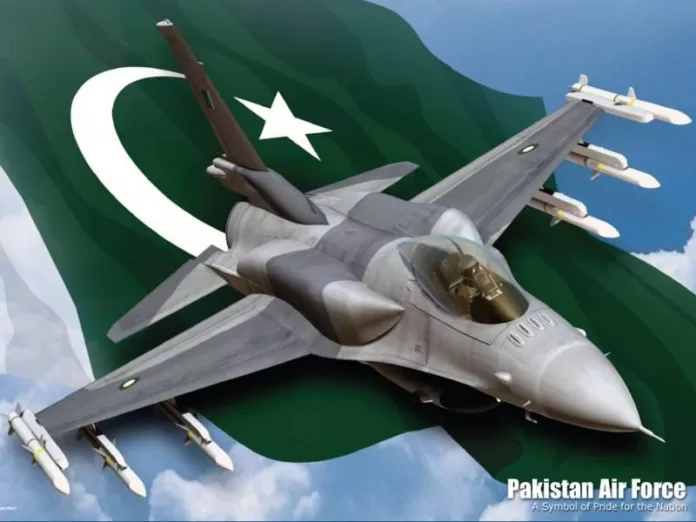In the past decades, PAF aviators have regularly taken off for assigned duties – both combat and routine – with the knowledge that, if they bailed out, especially in hostile territory, their comrades would not hesitate to risk their own lives in an effort to rescue them. PAF has ample experiences of its own from the 1971 war in East Pakistan, where it was forced to fight a war in the middle of an extremely hostile population and guerilla forces. Most of these hazardous rescue missions, commonly known as search and rescue (SAR) or in case of operations inside hostile territory combat search and rescue (CSAR), have been flown by airmen specifically trained and equipped for such operations. With PAF’s continued involvement in the sub-conventional conflict in FATA and Swat, the focus on traditional training, organizing, and equipping SAR teams operating in friendly territory and population to recover downed aircrews needs to change. Hence CSAR in a sub-conventional setup needs to become an important mission area receiving greater emphasis among Air Staff and throughout the defence organization.
Because of the fluidity and complexity of the modern non-linear battlespace and the associated blurring of distinction between friend or foe – coupled with the extremely harsh and remote terrain – it is significant that events in or around the conflict area requiring military options by the Air Staff should also involve the deployment of dedicated and specialized combat search and rescue teams. Events, in Iraq and Serbia/ Kosovo have taught that the capture and incarceration of downed aircrew (or even the cruel footage of dead aircrew) by the guerrilla forces tend to be of immense propaganda and morale value and its sensitive nature very often leads to disproportionate bargain offers from the enemy in return for the freedom of hostage aircrew.
In such a scenario, Air Staff’s interest needs to remain high concerning the safety of downed airmen and PAF’s ability to quickly and safely recover them. In the light of the inherent attributes of airpower i.e. Speed, Reach, Flexibility and Firepower by concentration of force, PAF is best suited to undertake such CSAR roles. To meet this requirement, PAF has to equip and train specialized rescue forces to undertake CSAR with an emphasis on conducting these delicate and hazardous operations in the alpine terrain round the clock in all weather conditions. Air Force is also unique in this role, as it can quickly bring in the entire network of its assets such as combat and air lift aircraft for close air support, Special Services Wing personnel (Air Force Commandos), Drones and Reconnaissance platforms etc in support of the ongoing CSAR efforts. CSAR core teams generally include:-
(a) Rescue Air crew
(b) Rescue Medical Team
(c) Rescue Ground Combat Team to gain access and provide security to the survivor(s) in coordination with other assets
These recovery teams and their support equipment preferably need to be deployed very close to the conflict zone so they are ready to execute their assigned tasks in support of combat operations at a very short notice. The primary task of CSAR is:-
(a) Locating the survivor(s) by visual or other appropriate search methods to pinpoint their location and permit recovery
(b) Establishing communication with the survivor(s) using appropriate measures
(c) Provide the survivor(s) necessary and immediate medical assistance on the spot or while enroute to an organized setup
(d) Recover the survivor(s) quickly and safely
(e) Return the survivor(s) to friendly control
The essence of CSAR is that its primary tasks would be performed inside hostile territory in the face of actual or potential enemy activity. Important secondary tasks of CSAR establishments include:-
(a) Provide personnel, procedures and equipment to train CSAR mission ready personnel during peacetime
(b) Advise on and update operational / non-operational procedures, SOPs, equipment configuration and personnel training
(c) Remaining within the bounds of safety, operate efficiently during peacetime
(d) Remain on high alert for quick mission response
(e) Configure and prepare rescue equipment for deployment on very short notice
(f) Provide self-protection for rescue teams during an active operation
(g) Communicate with support elements and available combat assets in the conflict zone and closely coordinate combat and rescue efforts for safe recovery of survivor(s)
(h) Within the conflict zone, provide direct intelligence support to the rescue aircrew, support elements and higher headquarters for better fire support, effective recovery and efficient coordination
As discussed in point number (g), the threats that rescue teams may find themselves operating against in the sub-conventional setup – where PAF enjoys complete air superiority – can be neutralized or deterred by the use of supporting aircraft and ground forces present in the area. Combat support elements providing air-to-air, air-to-ground, ground-to-ground and Suppression of Enemy Air Defense can deter, degrade or neutralize the threat, permitting rescue teams to safely enter the area and carry out their primary tasks. Rescue teams may be augmented by these supporting systems depending on the overall threat situation, accessibility to the survivor, and availability of mission ready assets.




